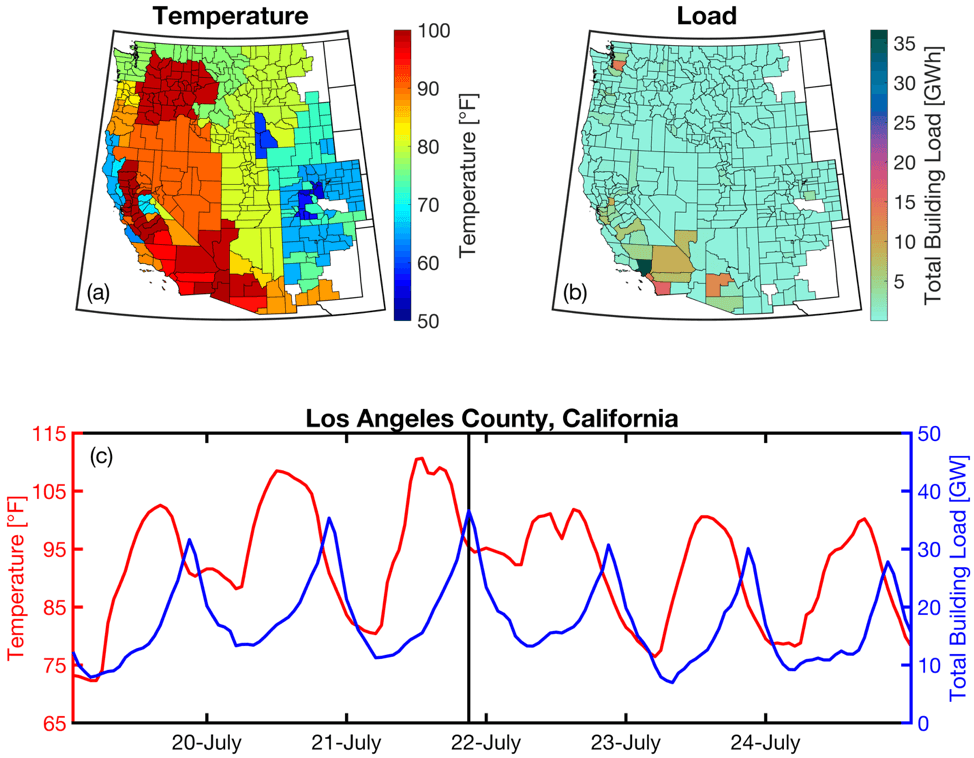Quoted from: https://im3.pnnl.gov/model?model=BEND
The Building ENergy Demand (BEND) model was developed at PNNL to simulate climate-dependent hourly building energy demands with the ability to represent the aggregate building stock over a range of geographic scales, including counties, states, electric utility zones, or census regions. BEND combines individual building energy models using DOE's EnergyPlus simulation engine with a geostatistical analysis of regional climate, population, and building types/technologies for the past, present, and future (Xie et al. 2018). This provides scale-flexible characterizations of regional building energy demands for commercial and residential buildings.
BEND was initially applied on the Eastern Interconnection (Dirks et al. 2015) and has recently been applied on the Western Interconnection (Burleyson et al. 2018; Taylor et al. 2019). The major outputs of BEND include peak and total annual building electrical energy consumption at hourly resolution. The BEND model has a wide range of possible spatial resolutions, as low as individual counties and as large as United States national scale. It also has a customizable range of specificity across parameters like building types, vintages, and sizes. This flexibility and the physical representation of buildings within BEND make it a crucial building block for understanding the aggregate electricity use impacts based on climate and weather variations and physical characteristics of the building stock.
The PNNL team is currently working to extend BEND's capabilities to include more building types and more modern vintages with additional EnergyPlus output data. These new efforts will allow the IM3 team to investigate key questions around hourly changes in building energy demand associated with heat wave events (Voison et al., in preparation), population growth or internal migration (Burleyson et al., in preparation), or novel building technologies.

Figure: Heat Wave Impacts on Building Energy Demand in the Western U.S.
BEND allows us to simulate changes in both annual electrical energy use and peak hourly electrical electricity loads at the county level based on a range of climate and population forecasts. Here, we show an example of a heat wave over California impacting total building energy demand simulated by the BEND model. The grid would be stressed if this heat wave were to co-occur with a drought in the Pacific Northwest, which exports large quantities of hydropower to California.








